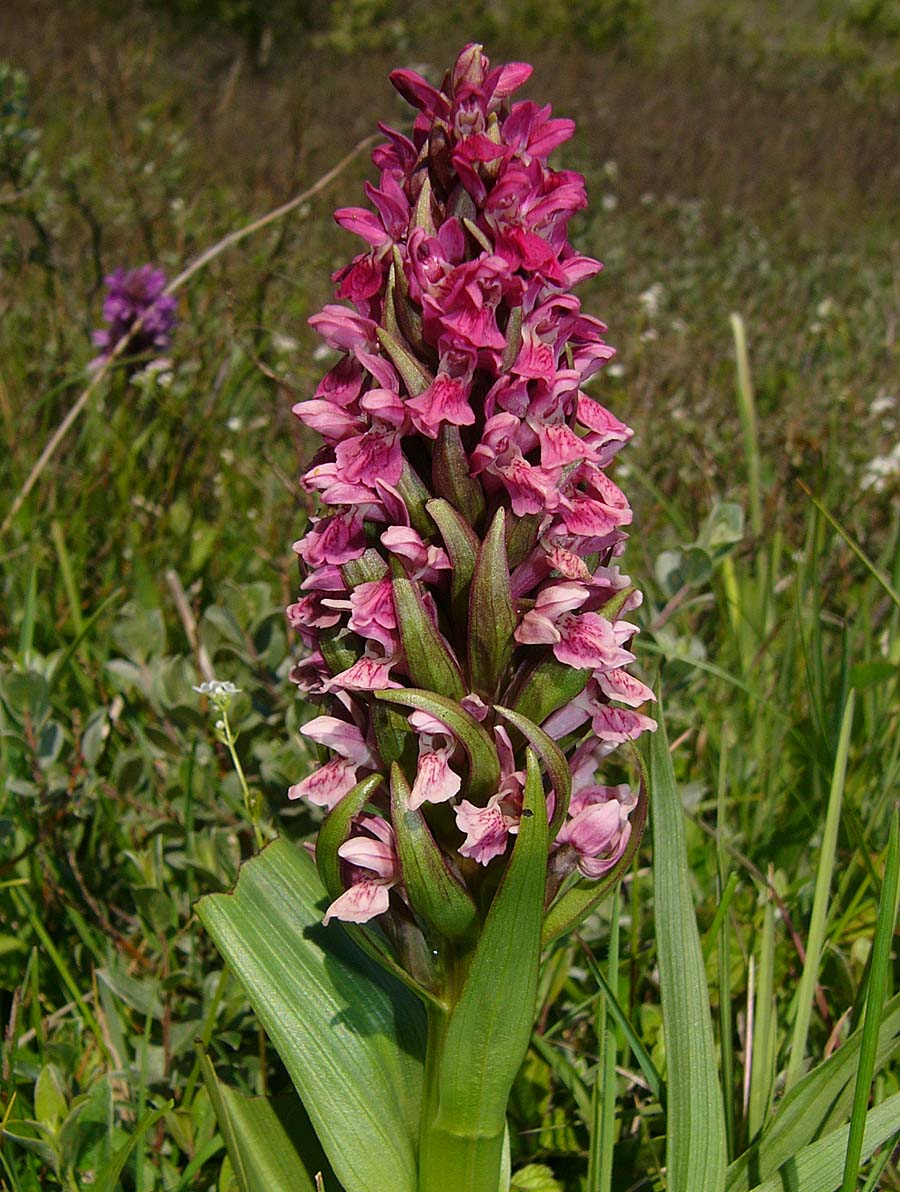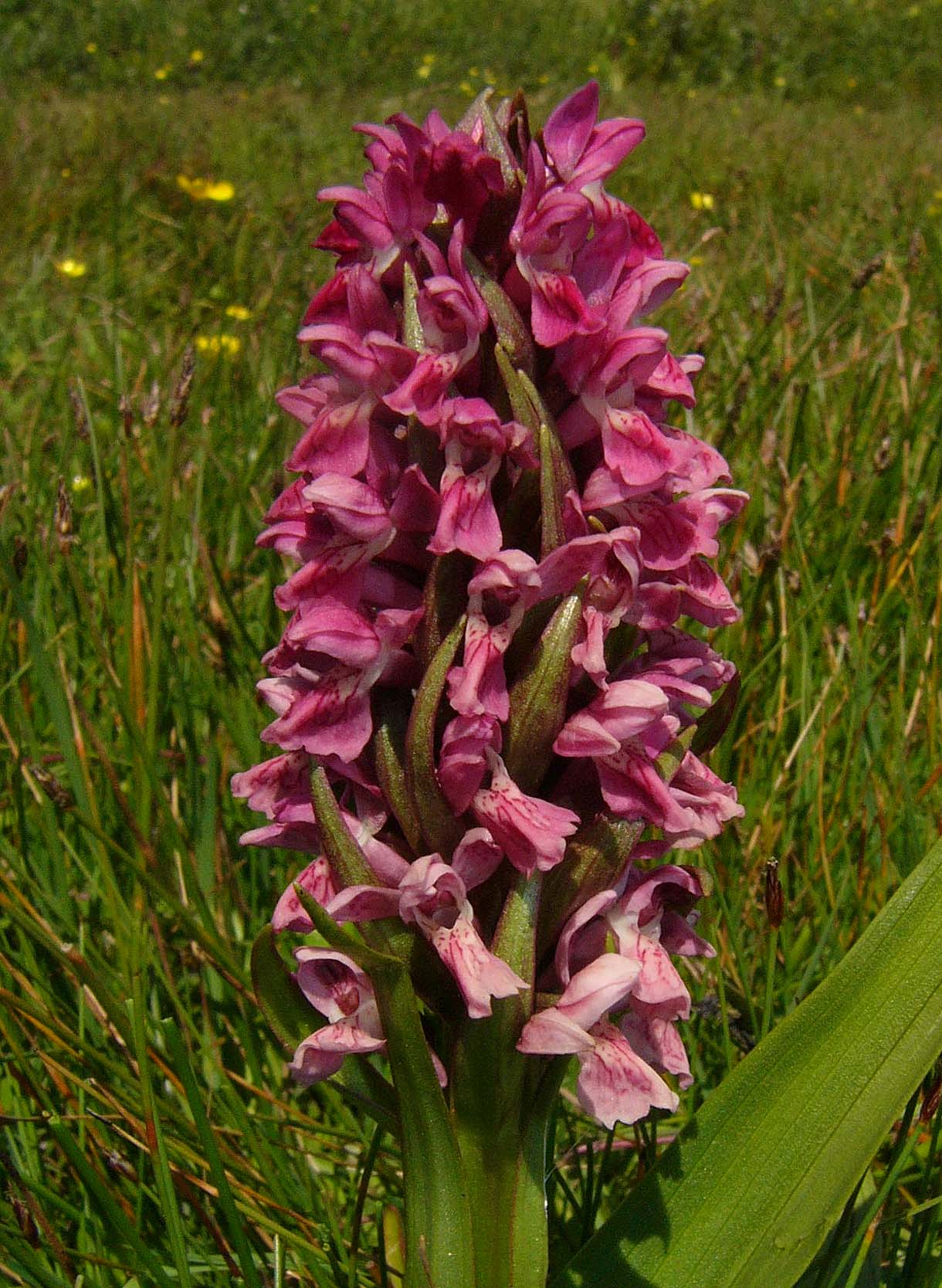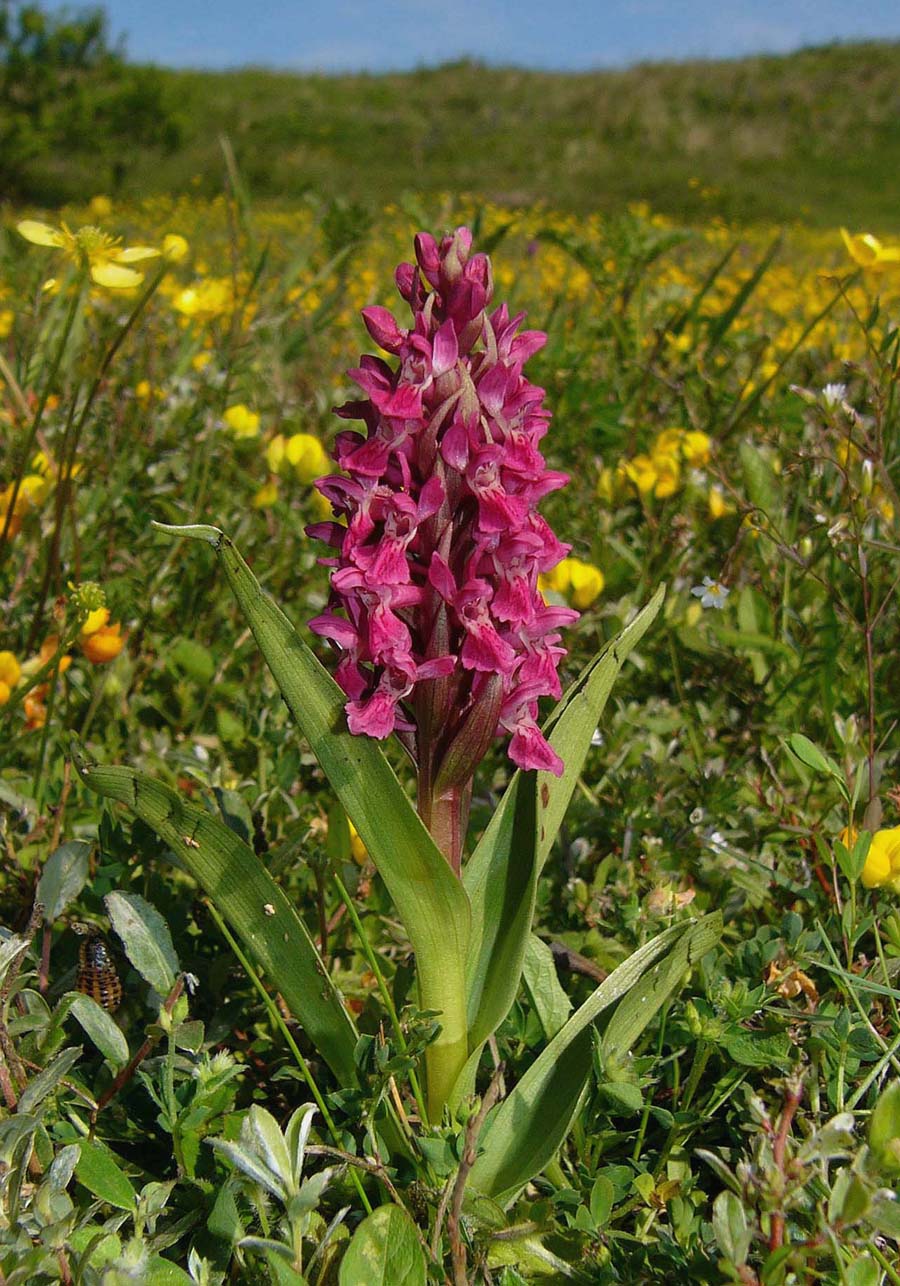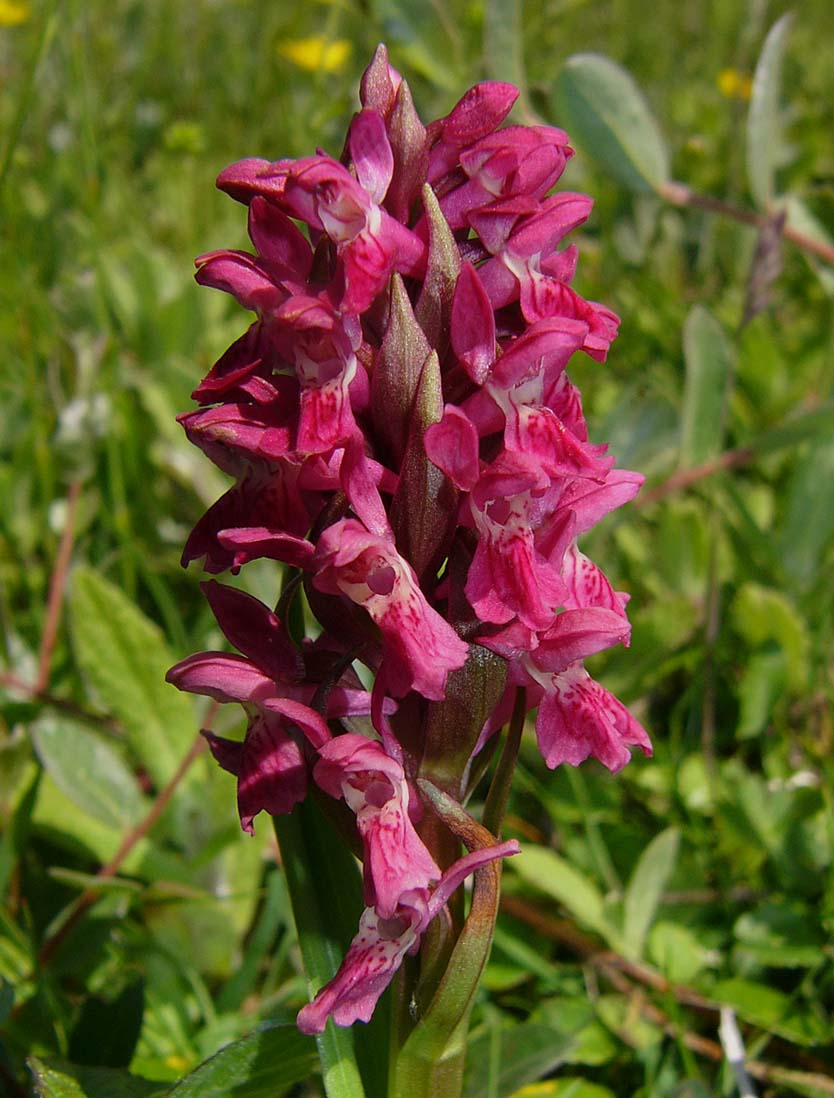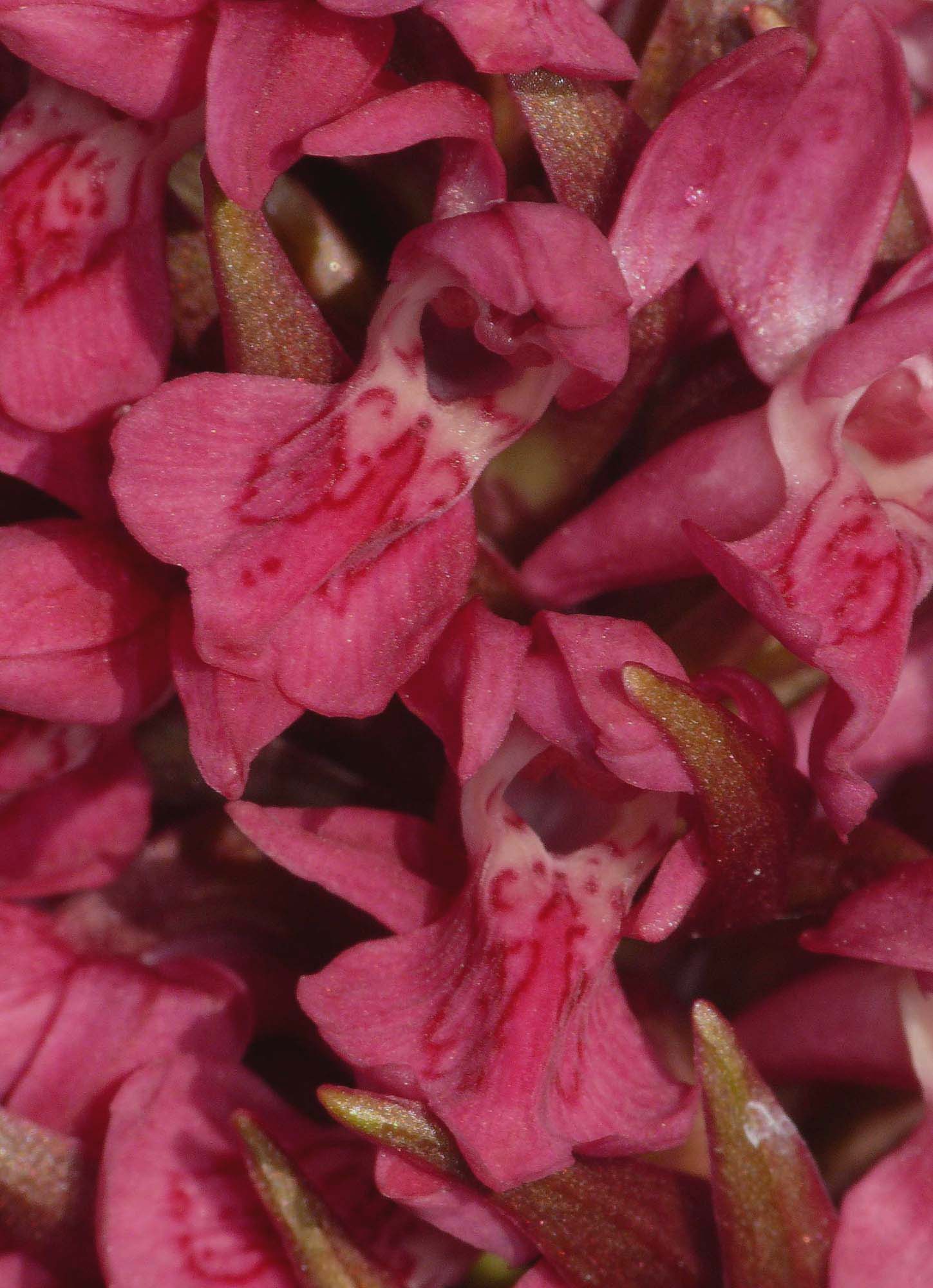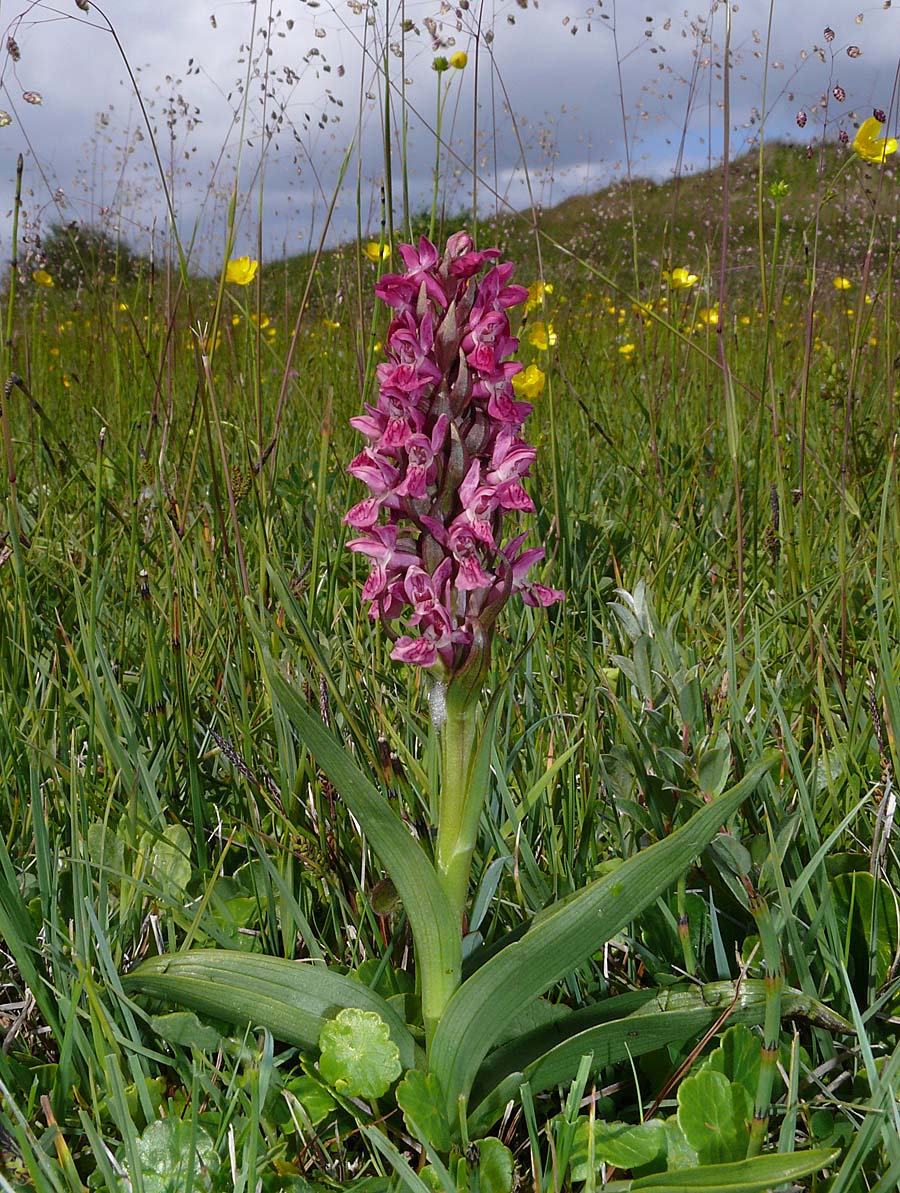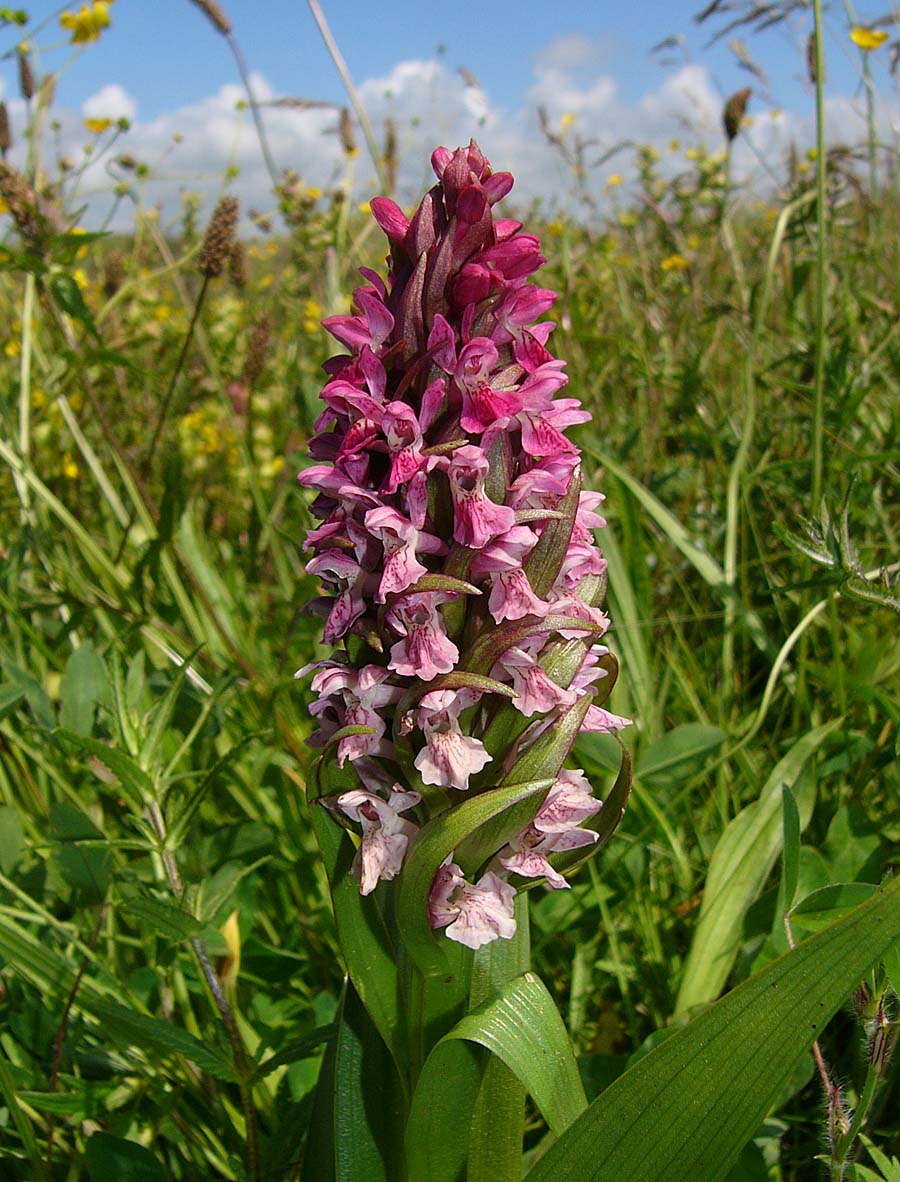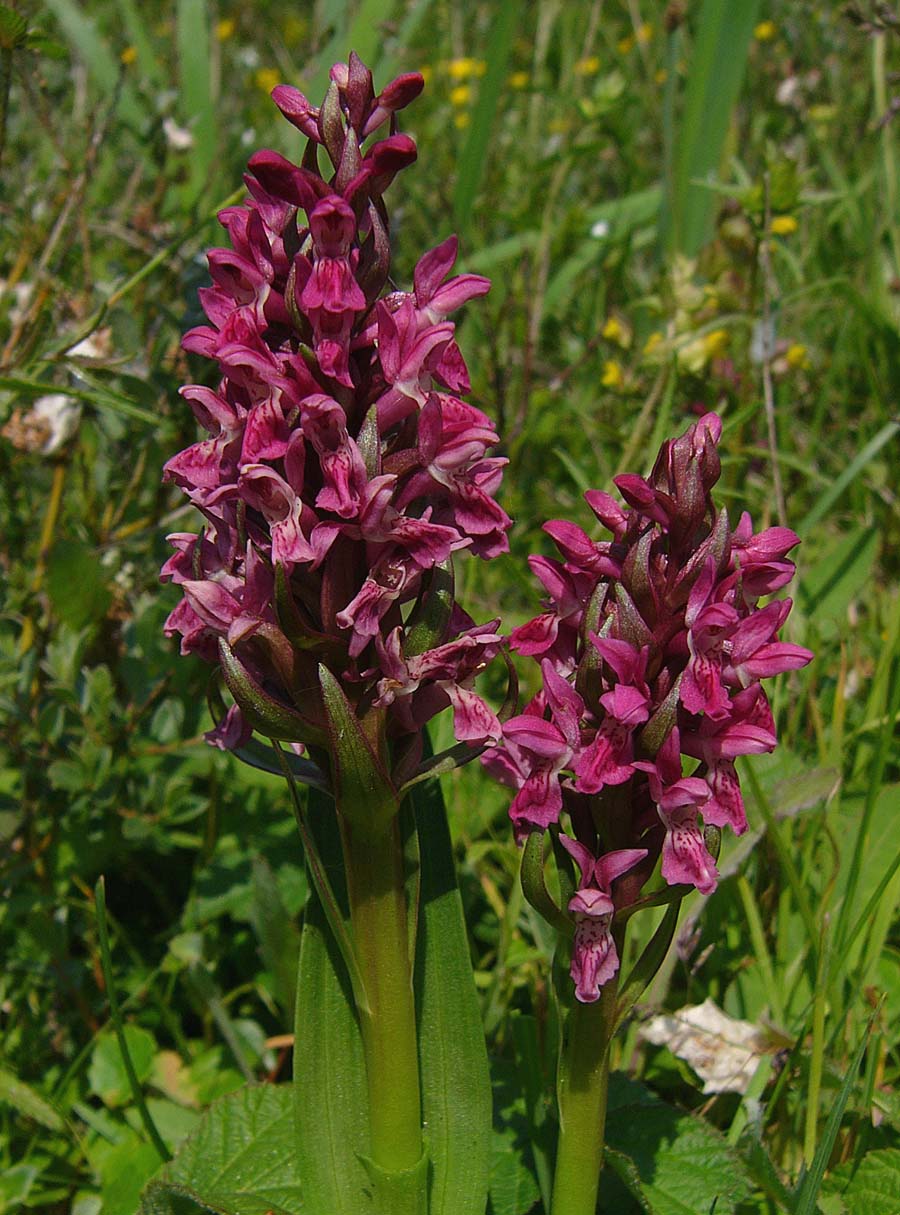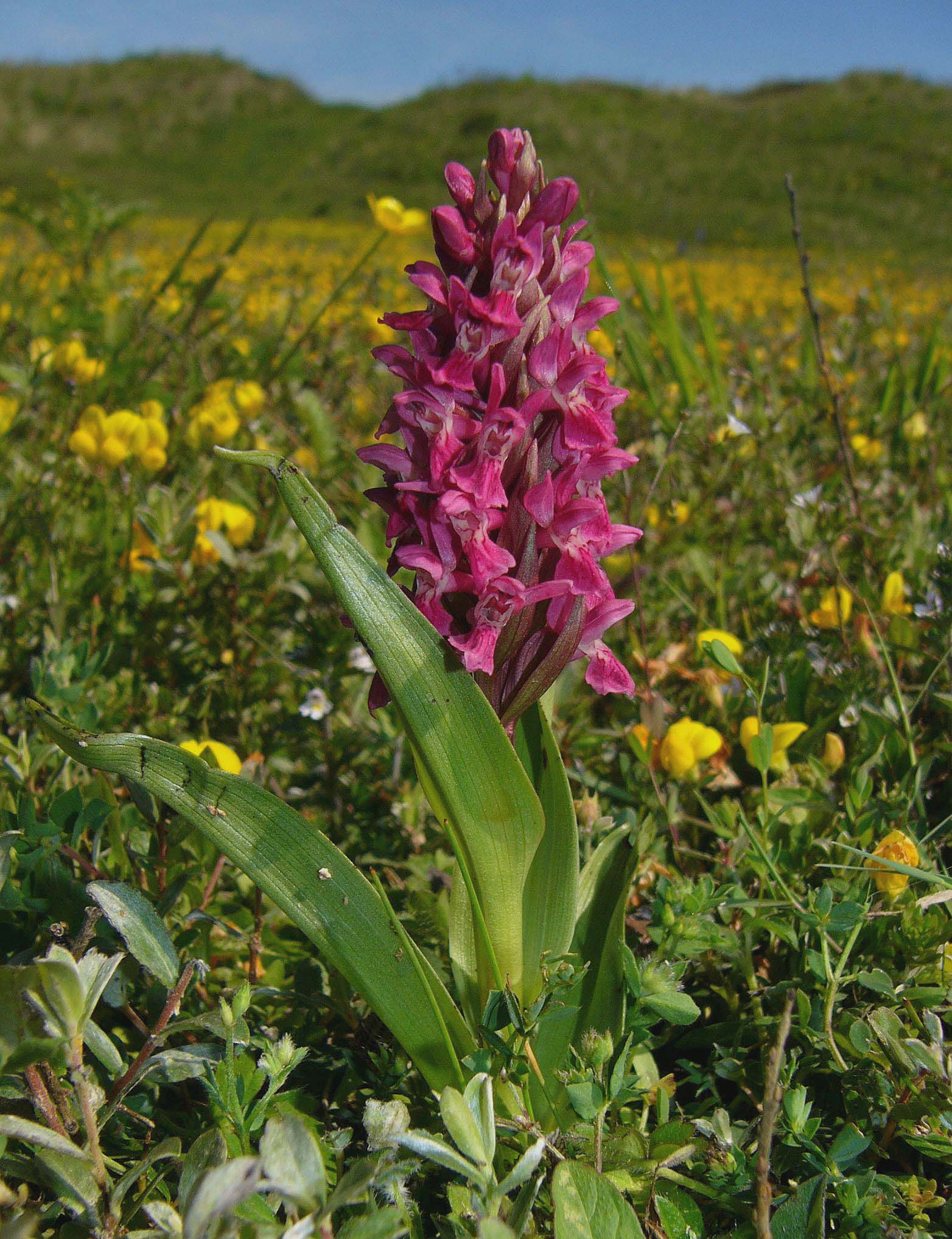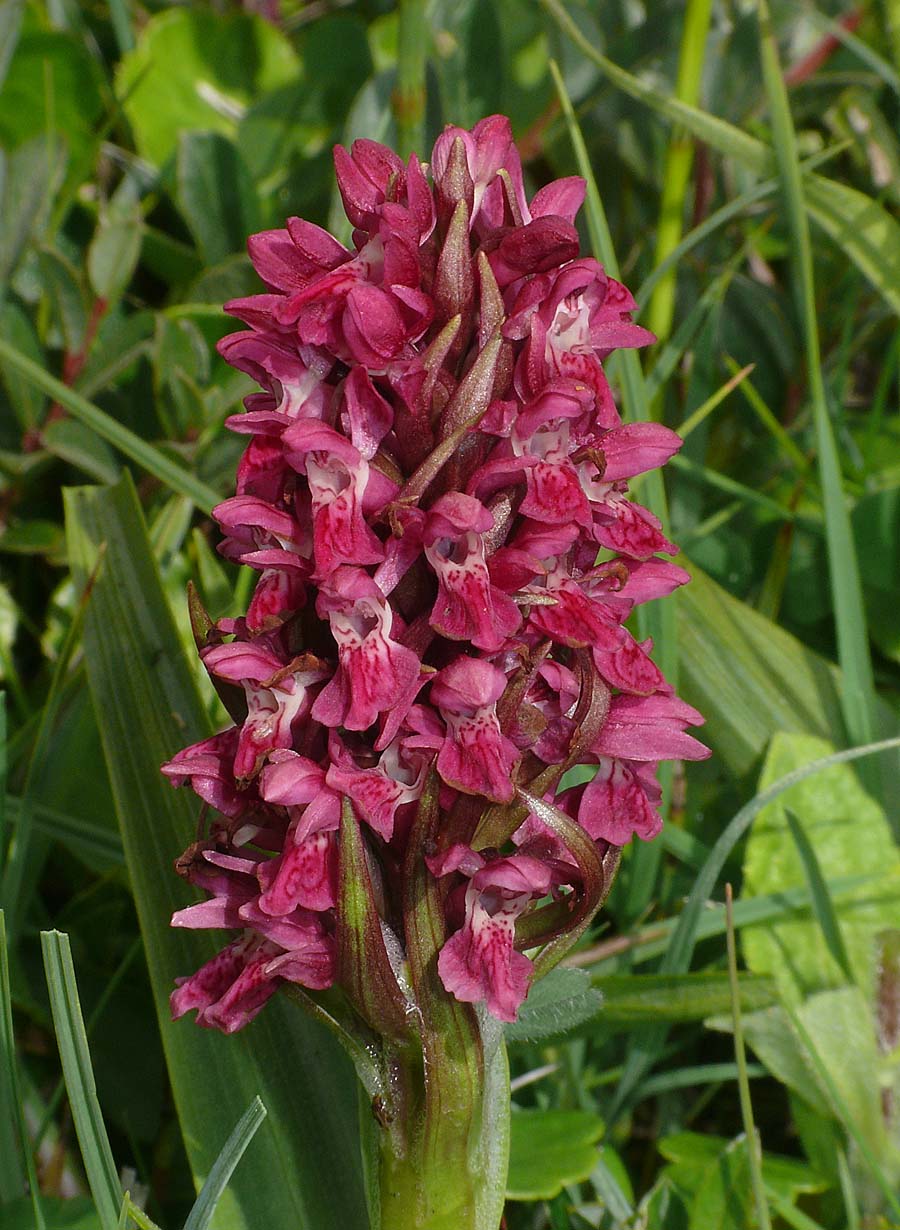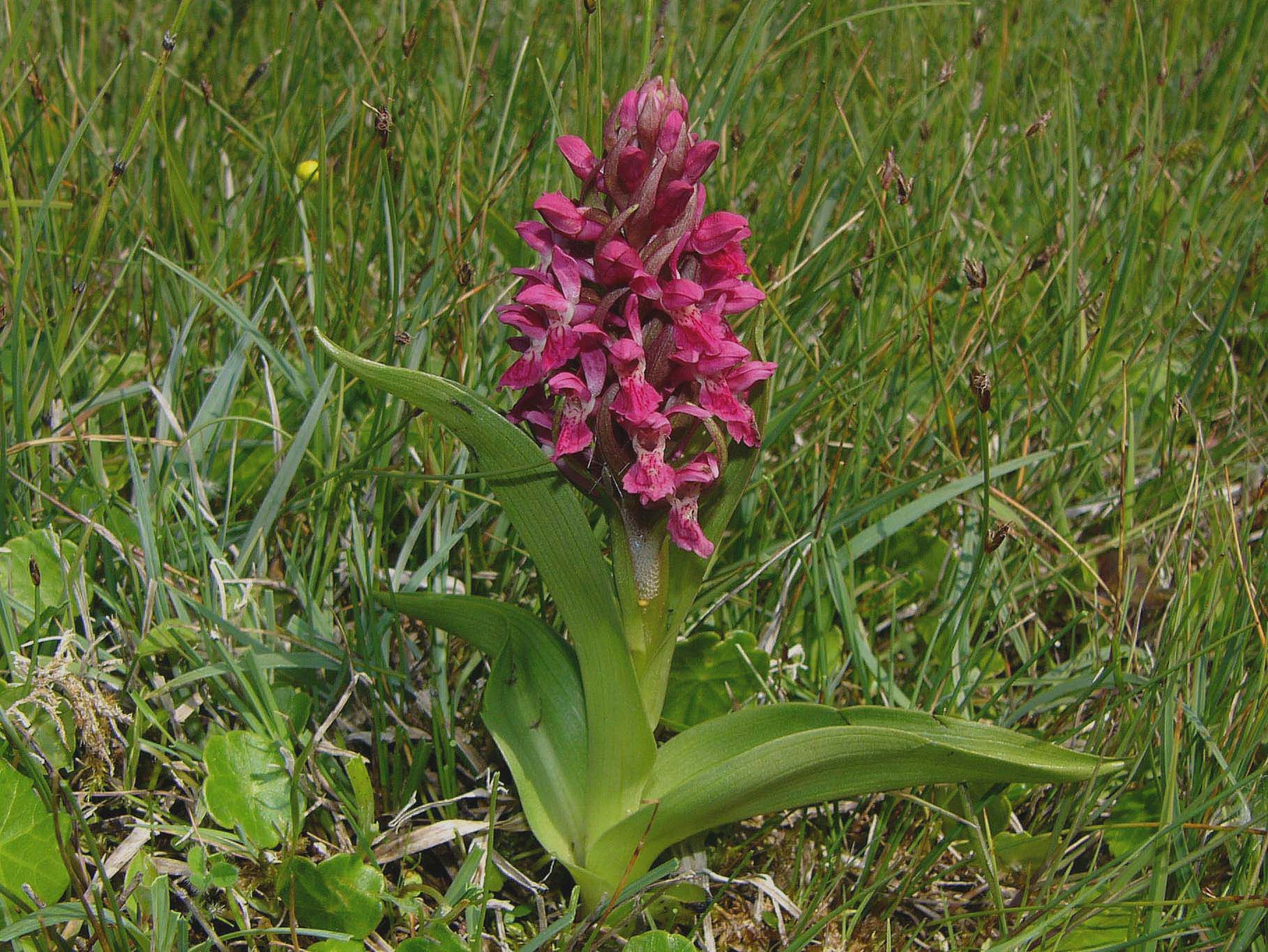D. coccinea was first described by Pugsley from Anglesey, Wales in 1884 at which time it was referred to as Orchis latifolia ssp coccinea. Pugsley then reclassified the plant as Dacylorhiza incarnata ssp coccinea
and in more recent times it has been accorded full species status,
though this is not a view shared by all authorities, some of whom
prefer retention of a subspecific position. The name "coccinea"
refers to the
The distribution of this species is restricted to the Irish Sea coasts
of Britain and Ireland where it is predominantly to be found growing in
wet dune slacks
and more rarely damp meadows. As with most species
in the genus, hybridization is
frequent and introgression can often make certain identification
rather difficult. Typically
however, the bright scarlet colouration tends to be retained, albeit in
various degrees of dilution. In its pure form D. coccinea
is a sturdy plant, growing to 30cms with flowers that are structurally close to those of D. incarnata and may be easily confused for D. incarnata ssp lobelii f dunensis which
grows in identical conditions and is similarly coloured. This latter
taxon, depicted in the final picture, is however a squatter plant,
rarely more than 20cms, with broader, closely layered leaves that arch
from the base of the stem. The flowers are however virtually
indidistinguishable.
Although the species has such a
limited and
localised distribution, it can be abundant
in its preferred locations, where in some sand dune systems,
particularly around the Welsh coastline, it can often be found in
huge numbers, usually amongst equally large numbers of several
other Dactylorhiza
species and the inevitable intermediate swarms. The pictures are
from south Wales, dating from the first week of June.
